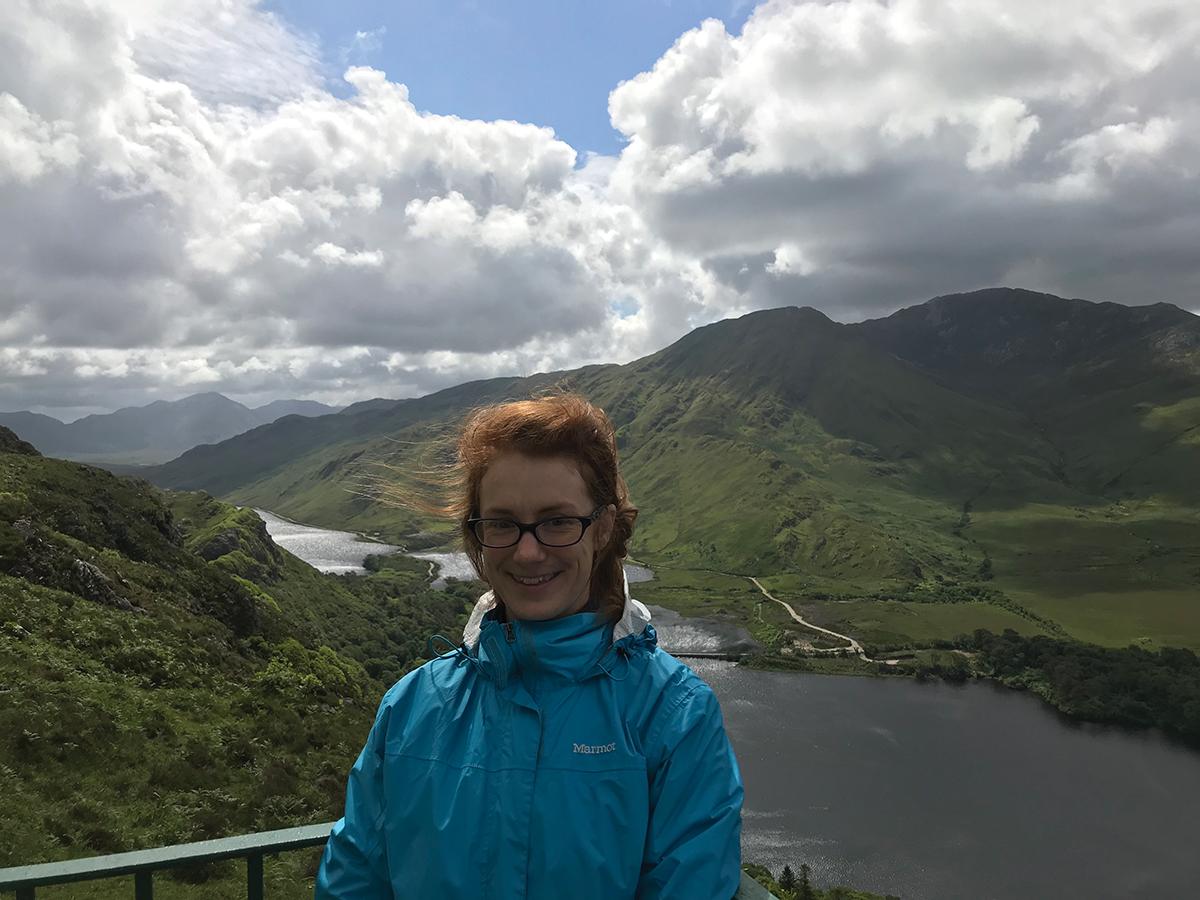
By Katherine M. Huber , PhD Candidate, Department of English
COVID-19 confronted us all with an uncomfortable present. The fear for the health and safety of family and colleagues, the inability to make plans in the midst of ongoing economic and political uncertainty, shifting safety guidelines, racial and income disparity in healthcare, and imposed isolation all brought the immense injustices pervasive in U.S. society into sharp relief. The national uprisings and resurgence of the Black Lives Matter movement that followed the murders of George Floyd and Breonna Taylor made the meticulous work of research seem both urgently necessary and totally out of touch. Over the past year, the CSWS grant has supported me in critical self-reflection that has reinforced my commitment to nuanced and rigorous historical research and teaching.
At a moment of intense protest and injustice in the United States, one aspect upon which I reflected deeply was my choice to study Ireland. While Ireland may seem to some an unusual choice for research about power and land, it offers an important case study for understanding the gendered and uneven forms of environmental development in close proximity to the imperial center. Ireland’s long history as a British colony has involved many forms of dispossession and land reform that were later exported to other British colonies. For example, the forced acquisition of land from indigenous Irish populations in the late sixteenth century made way for plantation systems and Protestant settlers from England and Scotland. As primarily Catholic Irish-speaking populations were pushed further west, their poverty and disenfranchisement were ensured by a series of legislations known as the Penal Laws (1607-1829). These laws systematically dispossessed colonized populations by limiting their material wealth, education, and political and religious freedoms. The effects of the Penal Laws substantively contributed to the mass starvation and emigration of primarily Irish-speaking populations during the Irish Famine of the late 1840s, a period in which food was still being exported from Ireland to an industrializing England.
Subsequent imperial land reforms perpetuated emigration even after Ireland’s War of Independence from 1919-1921. Ireland’s anti-colonial movement established solidarity with activists elsewhere, including Jawaharal Nehru, Marcus Garvey, and Pedro Albizu Campos, and culminated in partial independence in 1922, when the border separating Northern Ireland from what is now the Republic of Ireland was established. The border has remained a space of violent contestation, particularly during the Troubles from 1968-1998, and its broader impacts led to social justice movements. The Northern Irish Civil Rights Movement protested discrimination against minority Catholic populations in Northern Ireland, particularly in housing, healthcare, and environmental injustices, and forged connections with African American Civil Rights activists like Angela Davis. Over the past year, I have had the opportunity to write about these complex histories in an analysis of Ciaran Carson’s 1989 poetry collection Belfast Confetti. Carson’s poems draw the geologic time of river systems into the human histories of colonialism and sectarian violence to demonstrate Belfast’s rivers as cultural agents in ongoing formations of power and oppression in Ireland and abroad. A draft of this article was under review last summer, but I revised and published it in early 2021 in Green Letters: Studies in Ecocriticism, the UK–Ireland journal of the Association for the Study of Literature and Environment.1
These complex and intersecting histories of power have much to teach us about the material effects of colonialism in social and racial hierarchies today. Tracing these histories in Irish culture is the focus of my dissertation, “Re-mediating Ireland: The Nature of Modernization in Twentieth-Century Irish Culture.” Drawing on literature, film, archival photography, and radio, my project demonstrates how those most affected by environmental development projects challenge official narratives of modernizing fisheries, agriculture, and energy infrastructure to offer more enduring ways of life. For example, my first chapter examines photographs that reveal local resistance to imperial-era agricultural and fisheries reform under the Congested Districts Board, defying how modernity should look even within the official photographic record. The CSWS research grant enabled me to revise a version of this chapter into an article that has since been published in a leading journal in Irish Studies, Éire-Ireland.2 The environmental humanities are burgeoning in Irish Studies, and I am excited to help shape the field by being part of Éire-Ireland’s special issue on Ireland and the environment.
Additionally, I have begun a new project that draws my more historical research into the present. Ireland’s history of economic subordination in colonial and neocolonial regimes means that fewer people were immigrating into the country until the mid-1990s. More recent encounters with immigration and an increasingly racially diverse population during the economic prosperity of the so-called Celtic Tiger (1995-2008) raise important questions about what Black Irish identities look like during shifting European immigration policies in the early twenty-first century. I address these questions by examining representations of asylum-seekers in the Republic of Ireland’s Direct Provision (DP) system, which houses asylum seekers who wait for extended periods to learn if they may remain. While social justice activists have critiqued the overcrowded and degrading conditions of DP centers, scholars have examined how constructions of whiteness in an integrating European economy inform the Republic’s citizenship laws and refugee policies. My analysis of intersections of race and citizenship in Nicky Gogan and Paul Rowley’s 2008 documentary, Seaview, and Melatu Uche Okorie’s 2018 short-story collection, This Hostel Life, reveals representational strategies through which Black Irish identities assert agency and cultural belonging. I presented this work at the American Conference of Irish Studies in June 2021.
Reflecting on the work I have done with the support of CSWS, I am increasingly committed to rigorous research that helps us understand the complex histories and formations of power that have led to the gross inequalities of our current moment. Such work is urgently necessary as we question value systems worldwide that perpetuate the uneven distribution of wealth and resources during global crises like the COVID-19 pandemic and the climate crisis. Our ability to build meaningful coalitions depends on recognizing what Chandra Talpade Mohanty calls “coimplication,” which “refers to the idea that all of us…share certain histories as well as certain responsibilities.”3 By “tak[ing coimplication] seriously to understand ‘difference’ as historical and relational,” I hope my research enhances our understanding of coimplicated histories to build stronger coalitions for more equitable futures.
—Katherine M. Huber is a PhD candidate in English. She received a 2020 Graduate Student Research Grant from CSWS.
REFERENCES
1 “‘The Eden of the future…looking like the banished past’: Reading Riparian Agency in Deep Time in Ciaran Car-son’s Belfast Confetti,” Green Letters: Studies in Ecocriticism, DOI: 10.1080/14688417.2021.1893206
2 “The View from Mrs. Kelly’s Window: Reframing Agency and Land in the Congested Districts Board Photo-graphs,” Éire-Ireland: An Interdisciplinary Journal of Irish Studies special issue on Ireland and the Environment, DOI: 10.1353/eir.2020.0018
3 Mohanty, Chandra Talpade. Feminism without Borders: Decolonizing Theory, Practicing Solidarity. Duke UP, 2008, pp. 203.

